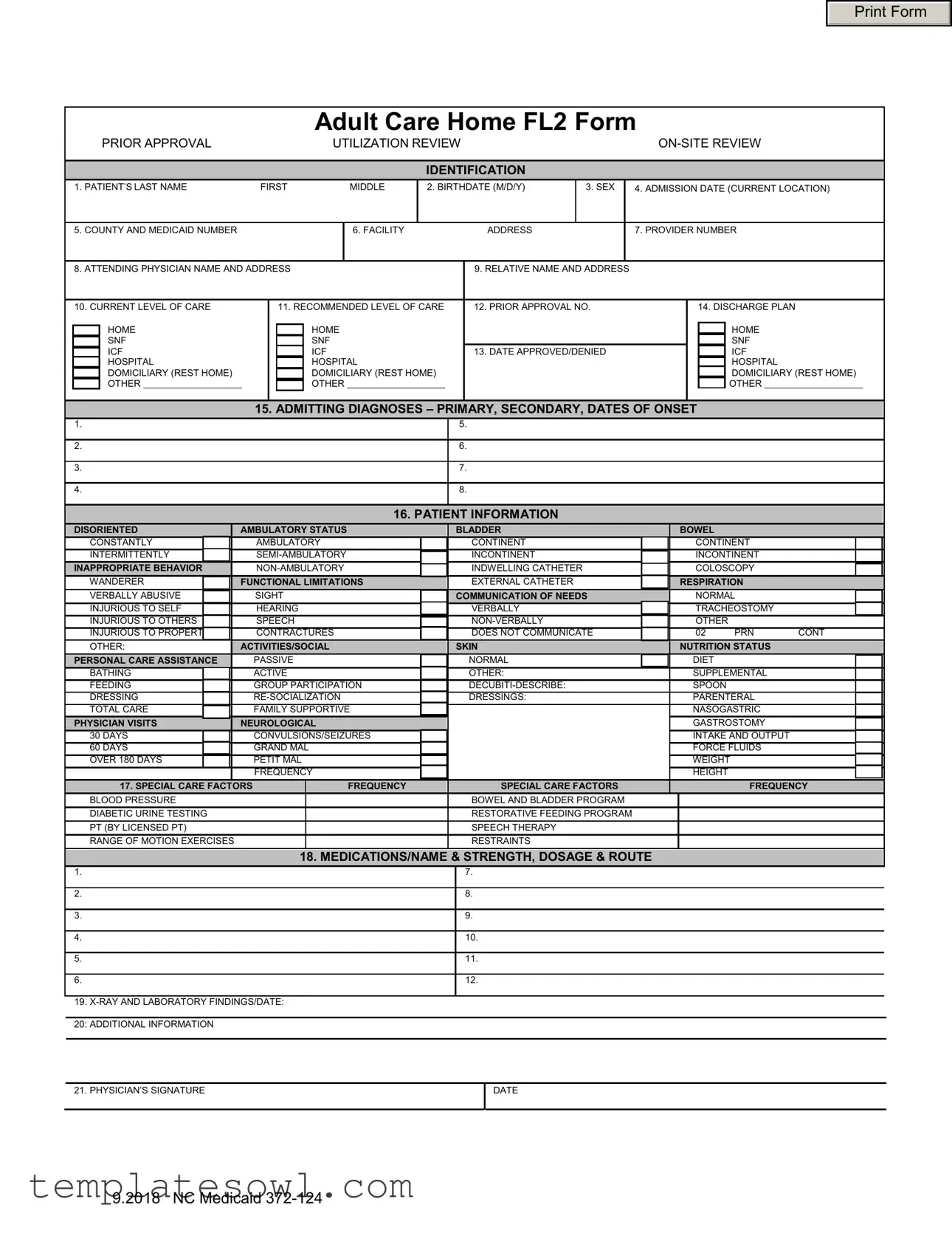What is the purpose of the NC FL2 form?
The NC FL2 form is used to request prior approval for Medicaid reimbursement for adult care home services. It captures essential patient information, medical needs, and the recommended level of care. It ensures that the services provided align with Medicaid guidelines for coverage.
Who needs to complete the NC FL2 form?
The form must be completed by the attending physician. It requires detailed patient information and must be submitted to Medicaid for approval before providing specific adult care home services. Family members or facility staff may assist in gathering information, but the physician’s input is crucial.
What information is required on the NC FL2 form?
You'll need to provide the patient's full name, birthdate, admission date, Medicaid number, and the facility's address. Additionally, you'll have to disclose medical diagnoses, current and recommended levels of care, medications, and any special care factors. Detailed information enhances the chance of approval and ensures appropriate care is requested.
How is the NC FL2 form submitted?
The completed form should be submitted to the appropriate Medicaid authority, typically either online or via mail. It's essential to follow up to ensure it's been received and is in process. Keeping a copy of the form for your records is also advisable.
What happens after the NC FL2 form is submitted?
Once submitted, Medicaid will conduct a utilization review to assess the need for the requested services. You will receive a notification indicating whether the prior approval was granted or denied. This process can take some time, so be patient and follow up if you haven't received a response.
Can the NC FL2 form be appealed if denied?
Yes, if the request is denied, there is an appeal process. You can request a review by Medicaid by following the specific procedures outlined in the denial notice. Make sure to provide additional information or documentation to strengthen your case during the appeal.

